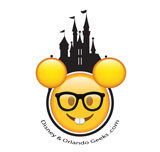Welcome to todays post exploring the influence of Disney on pop culture and society, so grab a cup of your favourite beverage and settle in for a great read.
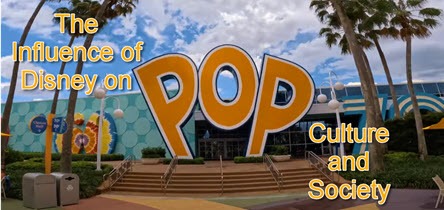
Disney, founded by Walt Disney and his brother Roy in 1923, stands as a colossus in the world of entertainment.
What began as a small animation studio has burgeoned into a global empire, encompassing not only animated and live-action films but also theme parks, television networks, merchandise, and a significant digital footprint.
With its unmistakable castle logo, Disney has become synonymous with enchantment and storytelling on an unparalleled scale.
The Influence of Disney on Pop Culture and Society
Disney’s influence extends far beyond the realms of entertainment.
From the creation of timeless characters like Mickey Mouse to the production of groundbreaking animated classics such as “Snow White and the Seven Dwarfs” and “The Lion King,” Disney has woven itself into the fabric of popular culture.
Its impact isn’t confined to the silver screen; Disney has left an indelible mark on music, fashion, language, and even the very way we celebrate holidays.
The company’s reach is felt globally, transcending cultural and linguistic boundaries.
Exploring Disney’s Multifaceted Influence
In this blog post, we will embark on a journey to unravel the multifaceted influence that Disney has had on both pop culture and society.
From its humble beginnings to its current status as an entertainment behemoth, Disney’s impact is both broad and deep.
We’ll delve into the evolution of Disney, its contributions to pop culture, societal implications, and its ability to adapt and shape-shift in the face of changing technological landscapes.
Join us as we explore the enchanting world of Disney and its enduring legacy.
The Evolution of Disney
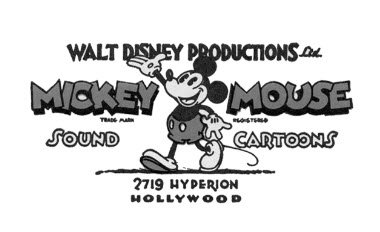
The History Of Disney From Its Inception To The Present Day
The story of Disney begins in 1923 when Walt Disney, along with his brother Roy, founded the Disney Brothers Studio.
Initially producing a series of short films featuring a character named Oswald the Lucky Rabbit, the company faced a setback when they lost the rights to Oswald.
Undeterred, Walt Disney, along with a small team of animators, introduced a new character that would become an enduring symbol of the brand – Mickey Mouse.
The creation of Mickey marked the beginning of Disney’s ascent in the animation industry.
Over the decades, Disney expanded its portfolio, introducing iconic characters like Donald Duck, Goofy, and Pluto.
The studio continued to innovate with the release of the first-ever full-colour cartoon, “Flowers and Trees,” in 1932.
The introduction of synchronized sound in “Steamboat Willie” in 1928 and the release of the first full-length animated feature, “Snow White and the Seven Dwarfs,” in 1937, solidified Disney’s reputation as a pioneer in animation.
As time progressed, Disney diversified its offerings, venturing into live-action films, television productions, and theme parks.
The opening of Disneyland in 1955 marked the beginning of Disney’s foray into the realm of immersive entertainment experiences.
Key Milestones, Successes, And Challenges
Disney’s journey is marked by numerous milestones, each contributing to its global prominence.
The success of “Snow White and the Seven Dwarfs” was followed by a string of animated classics, including “Cinderella,” “The Little Mermaid,” and “The Lion King.”
These films not only achieved critical acclaim but also solidified Disney’s status as a cultural phenomenon.
The expansion into theme parks with Disneyland, and later Disney World, became monumental successes, providing families with a magical destination that brought the enchantment of Disney stories to life.
The acquisition of Pixar Animation Studios in 2006 and Marvel Entertainment in 2009 further expanded Disney’s creative portfolio.
However, the journey was not without challenges. The passing of Walt Disney in 1966 left a void, but the company persisted in its commitment to creativity and innovation.
Economic downturns and the challenges posed by technological shifts, such as the advent of home video and digital streaming, prompted Disney to adapt and transform its business strategies.
Walt Disney’s Vision And Its Enduring Impact
Walt Disney’s vision went beyond mere entertainment; it was about creating a world where imagination knew no bounds.
His commitment to storytelling, innovation, and creating experiences that resonated with audiences of all ages laid the foundation for Disney’s enduring success.
The emphasis on quality, attention to detail, and a belief in the power of dreams became guiding principles for the company.
Walt’s influence continues to shape Disney’s ethos, with his famous quote, “I only hope that we don’t lose sight of one thing—that it was all started by a mouse,” serving as a reminder of the humble beginnings and the profound impact of a simple cartoon character.
The legacy of Walt Disney lives on not just in the company’s continued success but in the hearts and imaginations of millions around the world who have been touched by the magic he envisioned.
Disney’s Contribution to Pop Culture
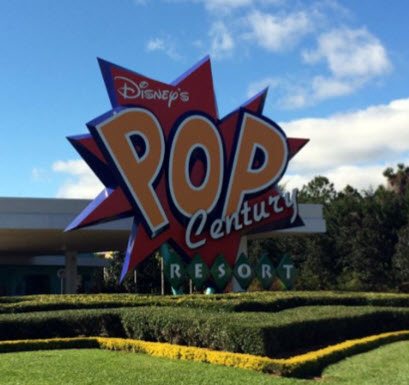
The Creation Of Iconic Characters
Disney’s contribution to pop culture is epitomized by the creation of iconic characters that have transcended generations.
Mickey Mouse, introduced in “Steamboat Willie” in 1928, became the face of not just Disney but animated entertainment as a whole.
With his cheerful personality and distinctive ears, Mickey captured the hearts of audiences worldwide.
The success of Mickey Mouse laid the foundation for the creation of a diverse cast of characters, including Donald Duck, Goofy, and Pluto.
Beyond the realm of anthropomorphic characters, Disney’s princesses, such as Cinderella, Snow White, and Ariel, have become cultural touchstones.
These characters, each with a unique story and personality, have left an indelible mark on popular culture.
Cinderella’s transformative journey from rags to riches, for example, has become a universally recognized symbol of hope and resilience.
The Development Of Groundbreaking Animated Films
Disney’s impact on pop culture is perhaps most evident in its creation of groundbreaking animated films.
“Snow White and the Seven Dwarfs,” released in 1937, was not only the first full-length animated feature but also a cinematic triumph that revolutionized storytelling in animation.
The film’s success paved the way for a series of animated classics, each contributing to the cultural zeitgeist.
The Disney Renaissance in the late 20th century saw the release of films like “The Little Mermaid,” “Beauty and the Beast,” and “The Lion King.”
These films not only achieved commercial success but also garnered critical acclaim, earning Academy Awards and embedding their songs and characters into the cultural lexicon.
Disney’s Role In Shaping The Animation Industry
Disney’s influence extends beyond individual films; it has played a pivotal role in shaping the entire animation industry.
The studio’s commitment to innovation, such as the introduction of synchronized sound in “Steamboat Willie” and the use of Technicolor in “Flowers and Trees,” set industry standards.
The multiplane camera, used in “Snow White and the Seven Dwarfs,” revolutionized animation by adding depth to the visuals.
Disney’s impact is also evident in its role as a trendsetter. The success of Disney’s animated musicals prompted other studios to explore similar formats, contributing to the rise of animated musicals as a genre.
The success of the Disney formula influenced storytelling techniques, character development, and animation styles across the industry.
In recent years, Disney’s acquisition of Pixar Animation Studios brought together two animation powerhouses, further influencing the industry’s creative landscape.
The studio’s continued commitment to technological innovation, evident in films like “Frozen” and “Moana,” ensures that Disney remains at the forefront of advancements in animation.
Disney’s contribution to pop culture is not just in the creation of beloved characters and animated films but also in its role as a pioneering force that has shaped the very fabric of the animation industry.
The impact of Disney’s storytelling and artistic innovation continues to resonate, leaving an enduring mark on the way we experience and perceive animated entertainment.
Disney’s Impact on Society
Disney’s Influence On Children’s Development And Imagination
Disney has played a profound role in shaping the development and imagination of children across the globe.
Through its animated films and characters, Disney introduces young minds to a world of wonder, magic, and valuable life lessons.
The relatable struggles and triumphs of characters teach children about friendship, courage, and the importance of staying true to oneself.
The imaginative worlds crafted by Disney stimulate creativity and curiosity in children. From fairy tales like “Cinderella” to adventurous tales like “The Jungle Book,” Disney instils a sense of wonder that fuels a child’s imagination.
The impact is not only entertaining but also educational, fostering a love for storytelling and encouraging the development of important cognitive and emotional skills.
The Cultural Significance Of Disney Theme Parks
Disney’s theme parks are more than mere amusement destinations; they are cultural phenomena that have become integral to the fabric of society.
Disneyland, inaugurated in 1955, and its subsequent counterparts worldwide, are immersive experiences that bring Disney’s stories to life.
These parks serve as a pilgrimage for families, creating memories that last a lifetime.
The cultural significance of Disney theme parks extends beyond entertainment. They are reflections of Walt Disney’s vision to create a space where people of all ages could escape into a world of fantasy and make-believe.
The parks celebrate cultural diversity through attractions that draw inspiration from different parts of the world, fostering an appreciation for global cultures.
Moreover, the architecture, music, and character interactions in Disney theme parks contribute to a shared cultural experience.
The parks have become iconic symbols of joy, enchantment, and a sense of community, making them touchstones of popular culture.
Disney’s Contributions To Family Entertainment And Bonding
Disney has been a stalwart contributor to family entertainment, providing content that transcends generations and fosters family bonding.
From animated classics to live-action films and television shows, Disney’s diverse portfolio caters to audiences of all ages.
The shared experience of watching a Disney film or visiting a theme park becomes a bonding opportunity for families.
The values embedded in Disney stories, such as love, friendship, and the triumph of good over evil, serve as conversation starters for families.
Parents often find themselves revisiting Disney classics with their children, reliving cherished memories and passing on the magic to new generations.
Disney’s commitment to family-friendly entertainment extends to its various media platforms, ensuring that families can enjoy content together.
The launch of Disney+, the company’s streaming service, has further facilitated shared viewing experiences, allowing families to access a vast library of Disney content at their convenience.
In essence, Disney’s contributions to family entertainment go beyond mere escapism; they create shared moments that strengthen familial bonds and contribute to the rich tapestry of family traditions.
The universality of Disney’s themes ensures that the magic of Disney is a thread that weaves through the collective memories of families around the world.
Cultural Diversity in Disney
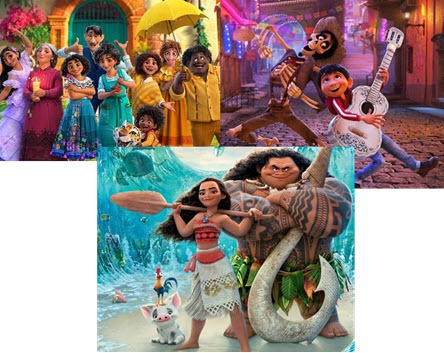
Disney’s Portrayal Of Diverse Cultures And Backgrounds
Disney’s portrayal of diverse cultures and backgrounds has evolved significantly over the years. In its early years, Disney’s animated films often reflected the cultural norms of the time, which occasionally resulted in stereotypes and misrepresentations.
However, as societal awareness grew, Disney became more attuned to the importance of accurate and respectful depictions of diverse cultures.
In recent decades, Disney has made conscious efforts to showcase a more authentic and diverse representation of cultures in its films.
For instance, “Moana” drew inspiration from Polynesian culture, incorporating input from cultural experts and consultants to ensure an accurate portrayal.
Similarly, “Coco” celebrated Mexican traditions, emphasizing the significance of family and the Day of the Dead festival.
The Evolution Of Disney’s Approach To Inclusivity
Disney’s approach to inclusivity has undergone a notable evolution. The company has become increasingly aware of the importance of representing a diverse array of characters, backgrounds, and perspectives.
This evolution is not limited to the characters themselves but extends to storytelling and themes that promote inclusivity and acceptance.
In recent years, Disney has introduced more inclusive narratives, featuring characters from various ethnicities, backgrounds, and abilities.
Films like “Frozen 2” have explored themes of identity and self-discovery, contributing to a more nuanced understanding of inclusivity.
Disney’s commitment to inclusivity is also evident in its theme parks, where efforts have been made to enhance representation and accommodate diverse audiences.
The inclusion of characters and stories that resonate with a global audience showcases a dedication to creating an inclusive and welcoming environment.
The Impact On Shaping Societal Perceptions Of Diversity
Disney’s efforts to portray diverse cultures and promote inclusivity have had a profound impact on shaping societal perceptions of diversity.
By presenting a more accurate and respectful representation of various cultures, Disney contributes to breaking down stereotypes and fostering cultural understanding.
The company’s storytelling has become a vehicle for showcasing the richness and beauty of diverse traditions.
Moreover, the inclusion of diverse characters in Disney narratives sends a powerful message to audiences, especially younger viewers.
Seeing characters from different backgrounds taking center stage helps normalize diversity and promotes empathy.
Disney’s commitment to inclusivity contributes to a broader cultural shift, influencing not only entertainment but also societal attitudes toward diversity and acceptance.
The impact extends beyond the screen, as Disney’s approach to inclusivity becomes a benchmark for other media and entertainment industries.
By prioritizing authentic representation, Disney sets a standard that encourages positive change and reinforces the idea that stories from all cultures and backgrounds deserve to be told and celebrated.
Disney’s journey towards embracing cultural diversity and inclusivity reflects a broader societal shift towards recognizing and celebrating the richness of human experiences.
As a cultural influencer, Disney plays a crucial role in shaping perceptions and fostering a more inclusive and understanding world.
Merchandising and Consumer Culture

Disney’s Success In Merchandising And Branding
Disney’s success in merchandising and branding is unparalleled, turning beloved characters into cultural icons and transforming the company into a merchandising powerhouse.
The strategic creation of memorable characters, such as Mickey Mouse, Donald Duck, and the Disney Princess lineup, has been a cornerstone of this success.
These characters are not merely figures in films; they are central to an extensive array of merchandise, ranging from toys and apparel to home goods and accessories.
Disney’s ability to leverage its characters extends beyond traditional merchandising. The iconic Disney logo and castle have become synonymous with quality and enchantment.
The company’s branding strategy, marked by consistency and a commitment to magic and imagination, has created a strong emotional connection with consumers.
This connection translates into consumer loyalty and a willingness to engage with Disney products across various categories.
The Role Of Disney In Shaping Consumer Culture
Disney has played a pivotal role in shaping consumer culture by influencing trends and consumer behaviours.
The popularity of Disney characters and stories has permeated every aspect of consumer goods, from clothing lines and accessories to home decor and school supplies.
The ubiquity of Disney products in the marketplace speaks to the company’s ability to tap into the collective consciousness of consumers.
Moreover, Disney’s approach to storytelling often involves creating narratives that resonate emotionally with audiences.
This emotional connection extends to the merchandise associated with these stories. Consumers don’t just buy products; they invest in a piece of the magic and nostalgia associated with Disney.
In this way, Disney has become a cultural influencer, shaping not only what people buy but also how they connect with the products they purchase.
The Popularity Of Disney Products And Their Influence On Trends
Disney products consistently enjoy widespread popularity, and their influence on trends is undeniable.
The release of a new Disney film or the introduction of a new character often triggers a surge in demand for associated merchandise.
The “Frozen” franchise, for example, led to a craze for Elsa and Anna-themed products, ranging from dolls and costumes to lunchboxes and bedding.
Disney’s collaborations with high-end fashion brands, such as the Disney x Coach or Disney x Pandora collections, have further elevated the status of Disney products, making them not just commodities but also coveted fashion items.
This blending of the magical and the fashionable has contributed to the mainstream acceptance of Disney products among audiences of all ages.
The influence of Disney on trends is not limited to merchandise alone.
Disney’s entry into the streaming industry with Disney+ has reshaped consumer behaviour, influencing how audiences access and consume content.
The success of Disney+ has set a trend in the streaming landscape and prompted other media companies to reassess their content distribution strategies.
Disney’s success in merchandising and branding has not only made its characters and stories ubiquitous in the consumer landscape but has also played a pivotal role in shaping trends and consumer culture.
The influence of Disney products goes beyond the transactional, representing a cultural phenomenon that continues to captivate audiences and drive consumer choices.
Disney in the Digital Age
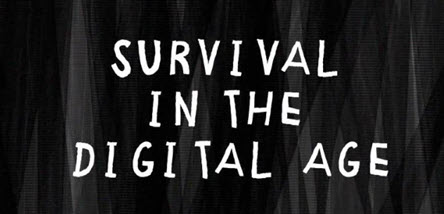
Disney’s Adaptation To Digital Platforms
Disney’s adaptation to digital platforms has been a strategic evolution, reflecting its agility in responding to changing consumer habits.
The company recognized the shift in audience behaviour and consumption patterns early on, leading to investments in digital technologies and platforms.
Disney’s foray into digital content distribution started with the launch of Disney Channel in the 1980s, and it expanded further with the creation of Disney Interactive Studios for video games.
In the digital age, Disney has embraced online streaming services as a cornerstone of its digital strategy.
The company’s acquisition of BAMTech, a streaming technology company, laid the groundwork for Disney’s own streaming platform, Disney+, which was launched in 2019.
Disney’s presence on digital platforms extends beyond streaming, encompassing social media, mobile apps, and interactive online experiences.
The Role Of Disney In The Streaming Industry
Disney has played a transformative role in the streaming industry, becoming a major player with the introduction of Disney+.
The platform, featuring a vast library of Disney, Pixar, Marvel, Star Wars, and National Geographic content, has quickly become a significant competitor in the streaming landscape.
Disney’s ability to leverage its extensive content library and create original, exclusive content has positioned Disney+ as a formidable force in the industry.
The success of Disney+ has reshaped the streaming landscape, prompting other media companies to re-evaluate their digital strategies.
Disney’s approach, which combines family-friendly content, beloved franchises, and a user-friendly interface, has resonated with audiences, making Disney+ a household name in the world of streaming.
The company’s emphasis on direct-to-consumer distribution represents a strategic shift in how content is delivered to audiences in the digital age.
How Disney Continues To Stay Relevant In a Rapidly Changing Media Landscape
Disney’s ability to stay relevant in a rapidly changing media landscape is rooted in its commitment to innovation, storytelling, and understanding its audience.
The company’s acquisition of key entertainment entities, such as Pixar, Marvel, and Lucasfilm, has allowed Disney to diversify its content offerings and appeal to a wide range of audiences.
Disney’s approach to storytelling, characterized by timeless themes and relatable characters, ensures that its content remains evergreen.
The company’s adaptation to new technologies, from the introduction of colour in animation to the development of cutting-edge streaming platforms, showcases its ability to embrace change while preserving its core identity.
Furthermore, Disney actively engages with its audience through social media, interactive experiences, and community-building initiatives.
The company’s presence in digital spaces extends beyond content distribution to creating immersive online environments that enhance the overall Disney experience.
This connection with audiences, combined with a continuous commitment to quality, helps Disney navigate and thrive in the dynamic landscape of digital media.
Disney’s success in the digital age is a testament to its strategic adaptation to changing technologies, its influence in the streaming industry, and its ability to stay relevant by evolving while staying true to its core values of storytelling and magic.
As the media landscape continues to evolve, Disney’s ability to innovate and connect with audiences positions it as a major player in shaping the future of digital entertainment.
Criticisms and Controversies
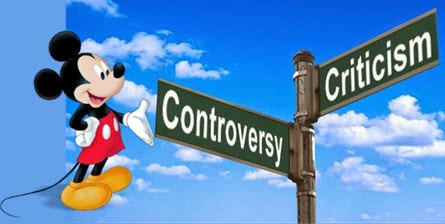
Criticisms Disney Has Faced Over The Years
Disney, despite its global success, has faced criticisms on various fronts throughout its history.
Some common criticisms include accusations of perpetuating gender stereotypes in its early animated films, lack of racial diversity in certain storylines, and concerns about labour practices, particularly in animation studios.
Additionally, Disney’s aggressive copyright protection and trademark enforcement have also been a subject of criticism.
Controversies Related To Representation, Cultural Sensitivity, Etc.
Controversies related to representation and cultural sensitivity have been a significant aspect of Disney’s history.
In earlier films, some characters and storylines were criticized for perpetuating stereotypes and lacking diversity.
For instance, films like “Dumbo” and “Peter Pan” have faced scrutiny for racially insensitive portrayals.
More recently, Disney’s live-action adaptation of “Aladdin” and the casting choices in “The Princess and the Frog” have sparked discussions about cultural appropriation and the need for authentic representation.
Disney has also faced criticism for its portrayal of LGBTQ+ characters. While there have been notable strides, such as the inclusion of a gay character in the live-action version of “Beauty and the Beast,” some argue that the representation is not extensive enough, and there have been calls for more diverse and meaningful LGBTQ+ representation in Disney films.
How Disney Responds To Criticism And Adapts Its Practices
Disney has demonstrated a capacity to respond to criticism and adapt its practices over time. In recent years, the company has made concerted efforts to address concerns about representation and cultural sensitivity.
For instance, the casting of Halle Bailey as Ariel in the live-action adaptation of “The Little Mermaid” received positive attention for challenging traditional norms and promoting diversity.
Disney has also taken steps to rectify historical missteps.
In the case of “Song of the South,” a film widely criticized for its racial insensitivity, Disney decided not to include it on its streaming platform, acknowledging the cultural context and the need to avoid perpetuating harmful stereotypes.
The company’s responses to criticism often involve a combination of public statements, internal reviews, and concrete actions.
Disney has engaged with advocacy groups, hired cultural consultants, and sought input from diverse communities to inform its decision-making processes.
The ongoing commitment to enhancing representation and sensitivity is reflected in the company’s content creation, casting choices, and cultural collaborations.
Disney’s adaptation to criticism is also evident in its labour practices.
The company has faced scrutiny for labour conditions in its overseas factories, prompting initiatives to improve working conditions and labour standards.
Ongoing dialogues with labour rights organizations and internal assessments demonstrate Disney’s recognition of its responsibility and a commitment to addressing concerns.
Disney’s journey involves navigating criticisms and controversies, and the company has shown a willingness to learn, adapt, and respond to societal expectations.
As the landscape of cultural sensitivity evolves, Disney’s approach to addressing these challenges remains a dynamic process, demonstrating a commitment to fostering positive change in response to criticism.
Conclusion
The Key Points Discussed In The Blog Post
In this exploration of the influence of Disney on pop culture and society, we’ve traversed the fascinating journey of a small animation studio’s evolution into a global entertainment giant.
We delved into Disney’s rich history, from the creation of iconic characters like Mickey Mouse to the groundbreaking animated films that have become cultural touchstones.
We examined Disney’s impact on society, from its influence on children’s development to the cultural significance of its theme parks and its contributions to family entertainment.
Disney’s Enduring Impact On Pop Culture And Society
Disney’s enduring impact on pop culture and society is evident in every facet of our lives.
The characters and stories created by Disney have woven themselves into the fabric of our collective imagination.
From the magic of Disneyland to the emotional resonance of animated classics, Disney’s influence is timeless.
The company’s ability to adapt to changing times, embrace diversity, and shape the digital landscape underscores its continued relevance in a rapidly evolving world.
Time To Share Your Thoughts And Experiences With Disney
As we conclude this exploration of Disney’s influence, we invite you, the readers, to share your thoughts and experiences with Disney.
Whether it’s a cherished childhood memory, a favourite Disney film, or a personal connection to the theme parks, Disney has touched the lives of millions around the world.
We’d love to hear about the moments that made Disney special for you and the ways in which its magic has shaped your pop culture and societal experiences.
Disney’s impact is a testament to the power of storytelling and imagination, transcending generations and cultural boundaries.
By sharing your experiences, you contribute to the ongoing narrative of Disney’s influence on our lives.
As the magic continues to unfold, let’s celebrate the enchantment that Disney has brought into our world and explore the diverse ways it has become an integral part of our shared cultural tapestry.
Why Not Share This Post On Social Media
If you’ve enjoyed this exploration of the influence of Disney on pop culture and society, why not spread the magic further?
Share this post on your favourite social media platforms, whether it’s Facebook, Twitter, Instagram, or beyond.
By sharing, you not only contribute to the ongoing conversation about Disney but also invite others to join in.
Let your friends, family, and followers discover the rich history and enduring impact of Disney on pop culture and society.
Together, let’s continue the celebration of the enchanting world of Disney! ✨🏰 #DisneyMagic #PopCultureInfluence
